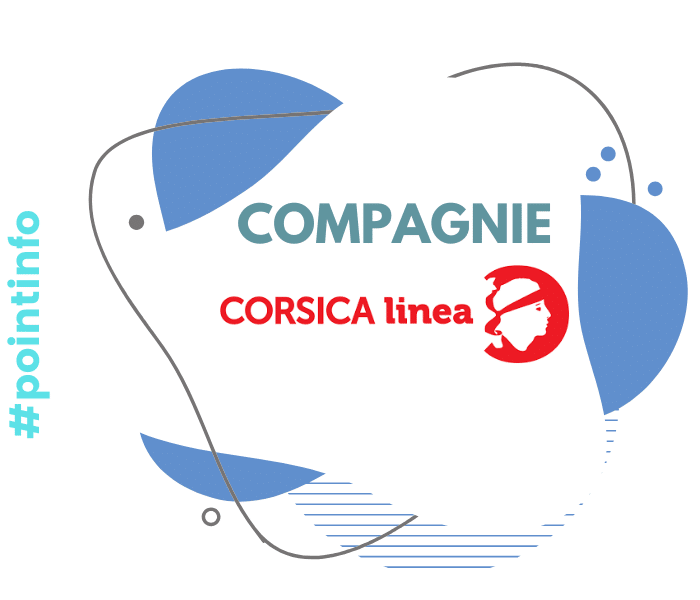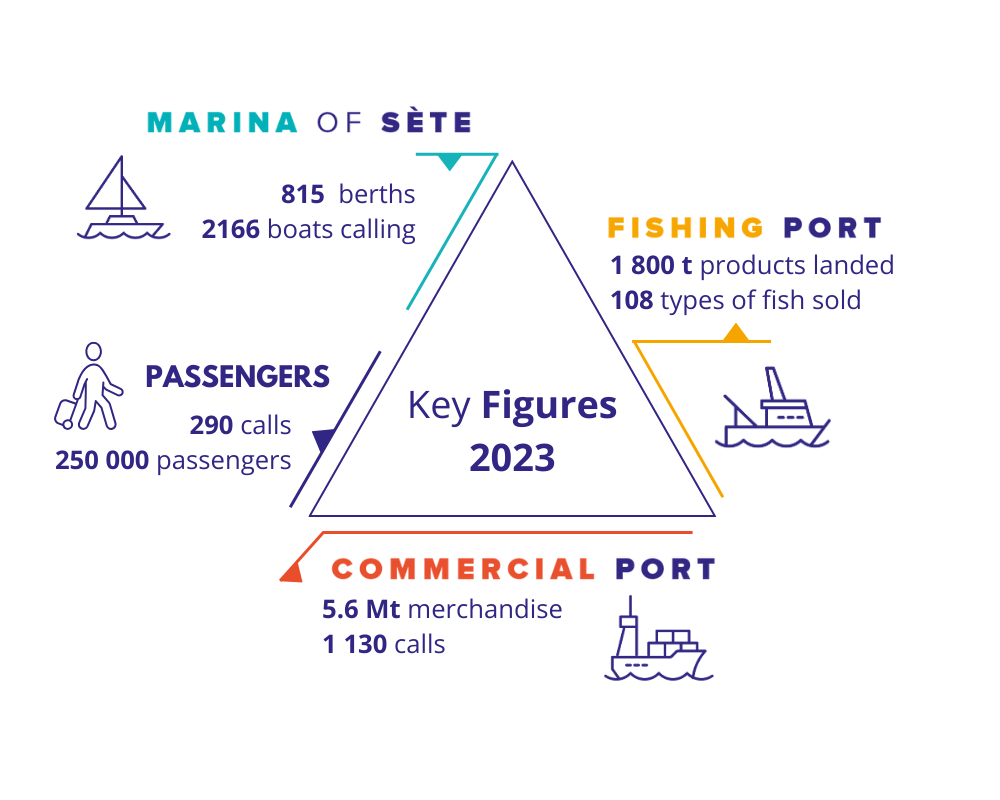





The port of Sète-Frontignan is one of the most important players in French maritime transport. It is the second-largest decentralized port in France, owned by the Occitanie/Pyrénées-Méditerranée region, which has created the public establishment Port Sud de France to manage its 3 port concessions.
This regional public establishment employs 95 people in the commercial, fishing and yachting port activities, as well as in the Port Management Department, which groups together cross-functional services such as Quality/Safety/Environment, sales, engineering, human resources, legal, accounting, communications, etc.
Together, they manage human, material and financial resources in compliance with environmental and regulatory requirements.
The Port of Sète is also home to a very active and supportive port community, comprising pilotage, towage and mooring services, port and dock handlers, logistics specialists, fishermen, fishmongers, handling and port agents…
The port of Sète generates over 1,700 direct jobs.

Take a ferry; thanks to its historic links with the ports of Tangier Med and Nador, the port of Sète is France’s leading port for ferrying passengers to Morocco.
Regular ferry services enable the port of Sète to handle 229,000 passengers a year. The shipping companies operating crossings from Sète to Morocco are Italy’s GNV ferry and Spain’s Baleària ferry.
Since spring 2023, Algeria has been a new destination offered from the Port of Sète.
Cruise stopover: the port of Sète has become an essential stopover on the Mediterranean, and the gateway to all the tourist attractions of the Occitanie region. It serves no fewer than 5 UNESCO World Heritage sites, and the cultural richness of the city of Sète makes it an unmissable stopover.
The commercial port of Sète is the second largest on the French Mediterranean coast. It is a deep-water port able to accommodate ships with a permissible draught of 13.5 m. It is the second-largest decentralized port in terms of total tonnage. The port of Sète has a number of strengths that enable it to remain competitive and constantly adapt to changes in its economic environment. In addition to its modern infrastructure, state-of-the-art port equipment, cranes and gantry cranes, its multimodal logistics offer combines sea, rail, river and road access. The port’s infrastructure enables it to attract new companies in secondary sectors, and to support its customers in the logistics and transport sectors, among others. The advantage of its geographical position at the gateway to Europe is also a guarantee of competitiveness.
The port of Sète is the historic fishing port of the Mediterranean, and was the first tidal market in Europe to be computerized in 1967. Since then, and in order to remain competitive in a constantly evolving sector, the port has never ceased to develop and propose solutions to sustain Sète’s fishing activity.
Since it was taken over by the Occitanie region, the fishing port of Sète has become more structured, and now encompasses three main activities: an auction for the sale of fish and shellfish, careening for the overhaul of fishing and pleasure boats, and management of the Frontignan fishing zone.
The Sète marina offers a wide range of boating possibilities, bathed by the Mediterranean, the Etang de Thau and crossed by canals. For decades, the quays of Sète have welcomed boaters from all over the world.
The marina has over 800 berths for sailboats, motorboats, multihulls and pleasure craft, accommodating vessels up to 70 m long. Inside the city, the enclosed canals managed by the Sète marina offer more than 1,100 moorings for small boats under 8 meters. The marina is an innovative port, close to its environment and its yachtsmen, motivating it to constantly renew its range of services and improve the quality of its welcome.
A basin is also dedicated to very large yachts, with electrification of the quays, planting of the surroundings and crew services (pool house, fitness club, cosy indoor lounges, outdoor relaxation areas, etc.).
Port de Sète © 2023 Legal notice | Site map | Privacy policy | RGAA Charter | Website creation Keole.net
